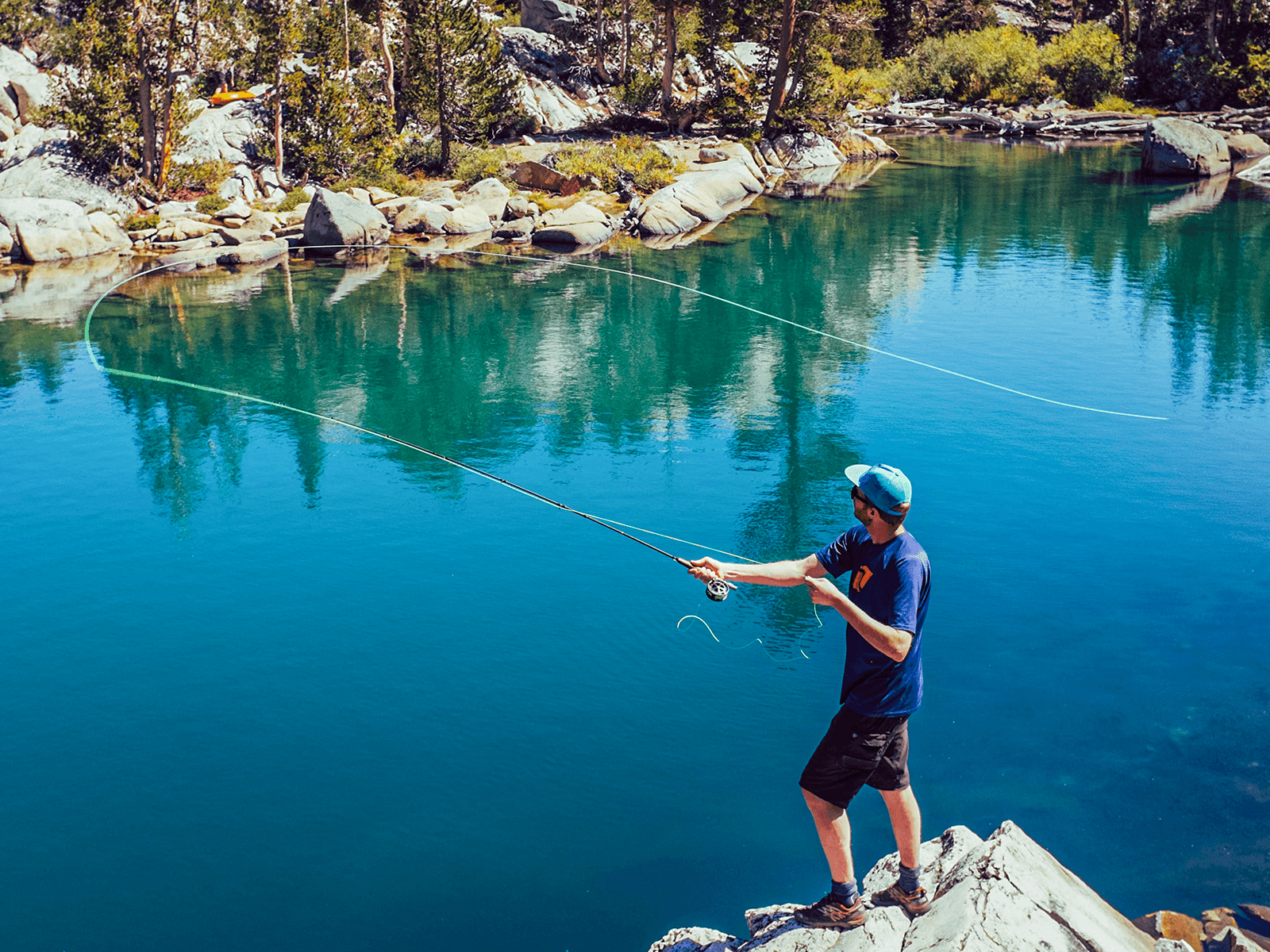May 14, 2020
Fly Fishing

Fly fishing is one of the most common ways to fish. However, as simple as it seems, fly fishing is also one of the more advanced and difficult ways to fish. What makes fly fishing difficult? The cast. In most typical forms of fishing, lure, bait, sink, line and hook is a standard headspace. But with fly fishing, it is all about finesse and elegance, a true art form of casting.
What is fly fishing?
Fly fishing is the technique of using artificial ‘flies’ at the end of specific fly rods in order to get fish to bite. The reason for using this method is to mimic the acts and movement of real live insects above the water. Fly fishing can be used in fresh or saltwater.

What makes fly fishing difficult is the same thing that makes it so different from conventional types of fishing - the casting. Casting during fly fishing uses heavy lines while casting lighter-weighted objects – this is the exact opposite philosophy for any other form of angling, which is why it is not only harder to learn but also takes longer to master. Another distinction with fly fishing is that you don’t need to bring the fly fully in before recasting it. Fly fishing is all about variations, quick and repetitive motions.
Over the recent few decades, fly fishing has made incredible advancements – not just with the technology and equipment but also with popularity. Some of the earliest reels were designed by watchmakers, and lines were previously made of silk. This form of fishing, once classified as an upper-class fishing style for trout and salmon, has shifted to a more sport-like mentality for prized game fish on all types of water for thousands of fish species and all anglers.

Fly Fishing Gear and Equipment
With fly fishing being unique and specialized as it is, anglers need specific fly fishing gear. The first rule of thumb is that your line is more important than your rod or reel. So if you are on a budget, we suggest first investing in a more premium floating line, and you can circle back to upgrading other pieces later. Lines need to be heavy enough to flex the rod when you go up and down from the water during casts.

True anglers take great pride in their craft from the elegance of setting a cast to the gear they equip themselves with. Practicing a good cast only gets you so far; a great case relies on the balance of the rod and line. While your line is heavier, the rod is essential in your cast because it gives the energy to send out the cast since flies are practically weightless. Since your rod is so important for the cast, look at your reel as just a line storage facility, serving very other minimal purpose.
Fly lines and fly rods are weight classified, ranging from 1 (very small fish) to 8+ (large and powerful fish). So before just setting out, make sure you know what you are going after and that your fishing equipment matches it.

With each fly line, attaching a tapered leader is next. These typically start out thicker and taper to a fine point, which allows for your cast to ‘roll out’ instead of getting tangled in a bunch at the end. A nylon monofilament leader is another crucial piece of gear, helping to alleviate the thickness when attaching the fly. We prefer starting out with a 7 – 9.5ft leader, while the rest of the tippet you can tie your fly to.
-TIP- Remember to get a spool of tippet, you will need to cut off tippet when changing flies or a broken line, so the spool will be used to replace that.

Lastly, after you taken care of your rod, reel, line and leader, you need to invest in the flies themselves. This cannot easily be summarized, as the types and feedback are endless. But, in a nutshell, artificial lures can easily be bought or even handmade for you crafty folks out there. The two types of flies out there are floating and sinking. Their names are pretty self-explanatory, but flies fall into these two categories. The goal of both of these types of bait is to imitate food for different types of fish, so if you decide to make your home flies, keep shape of bait in mind.



